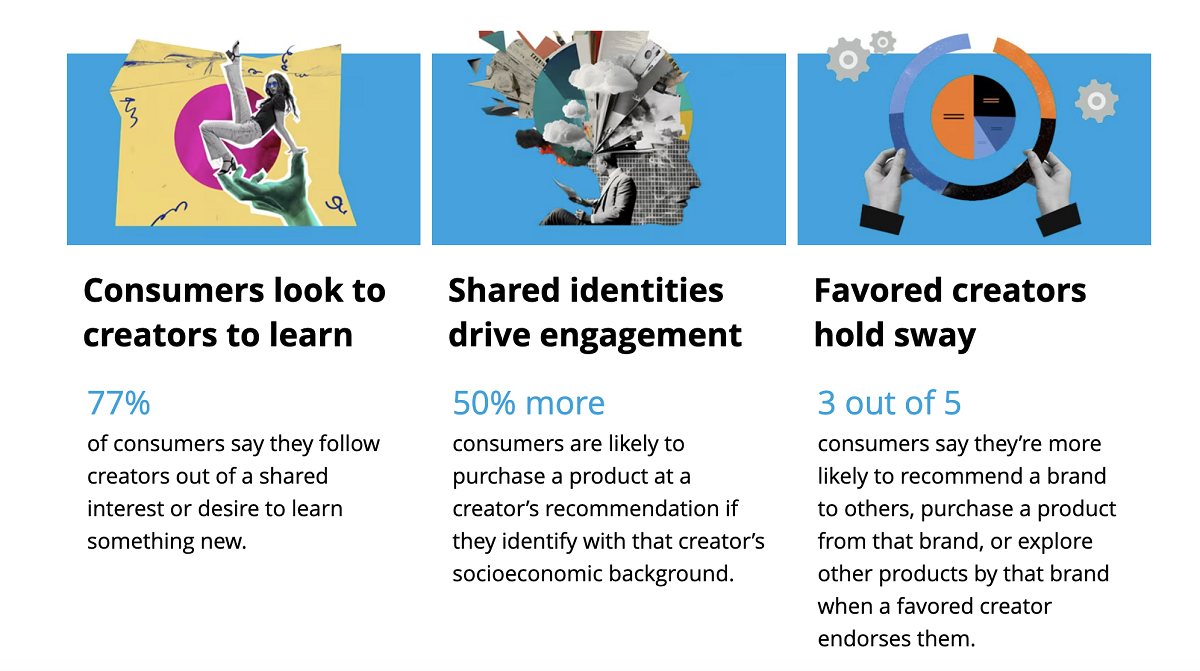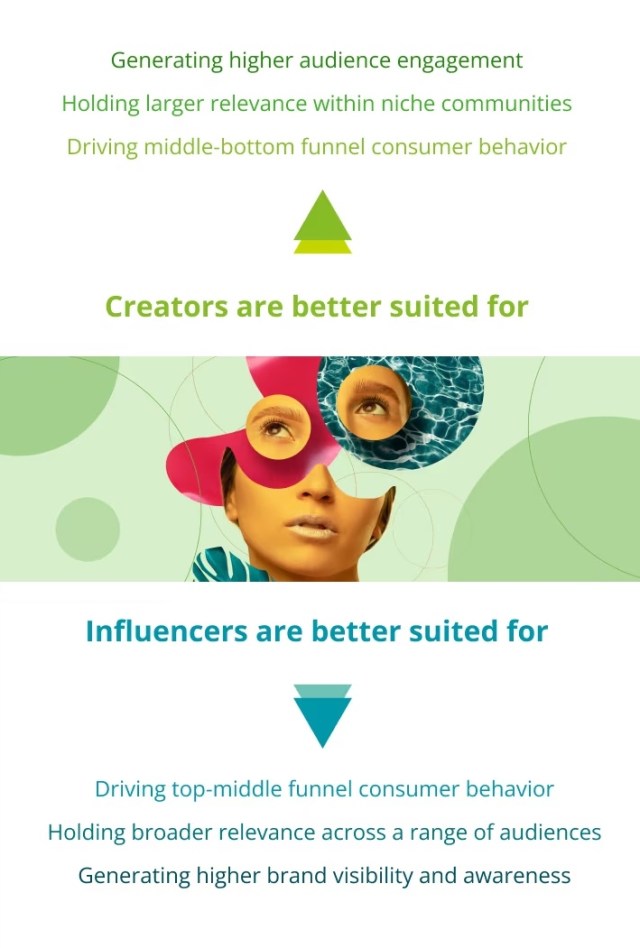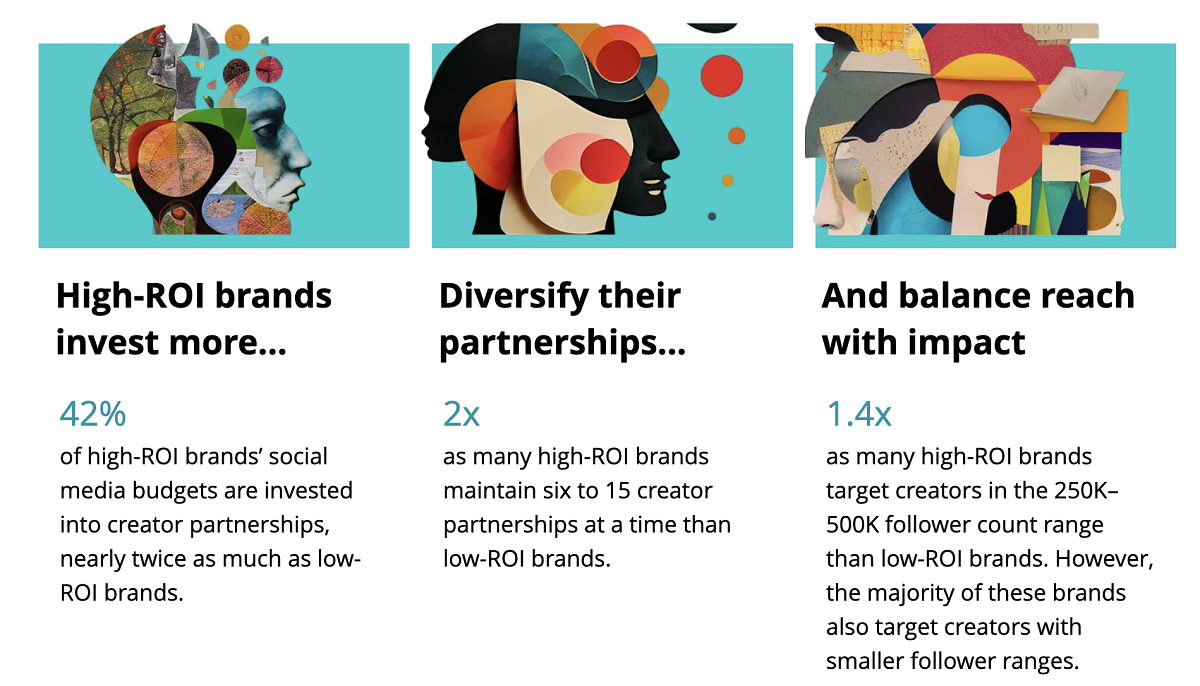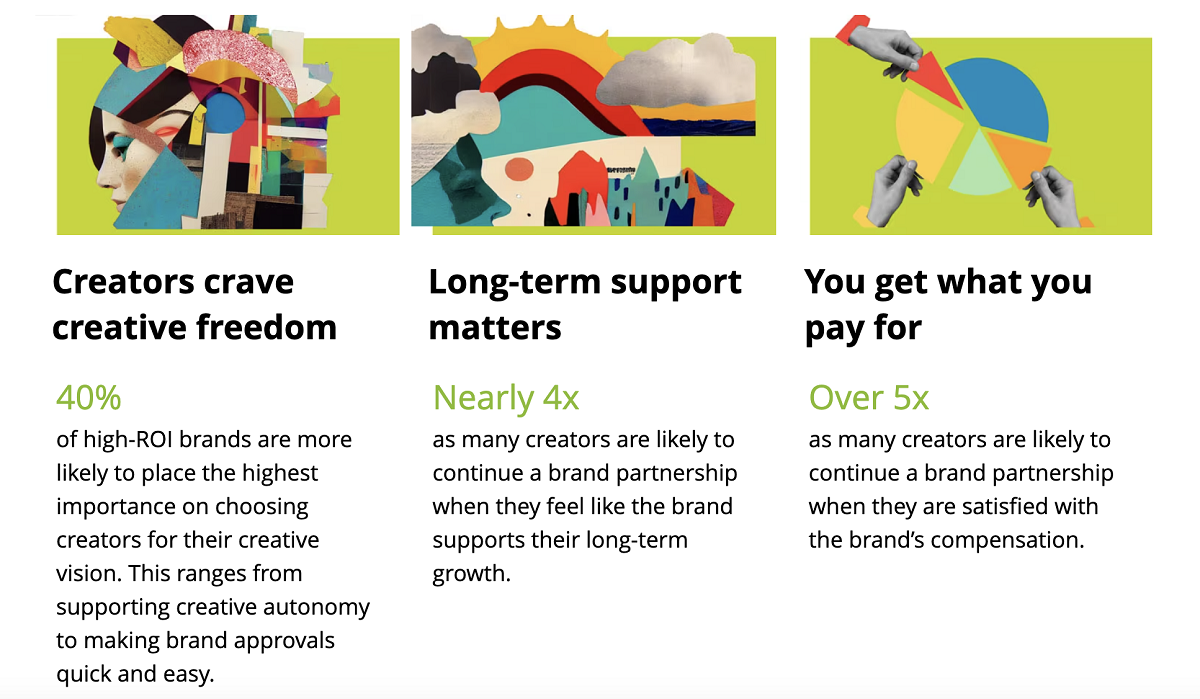
TL;DR
- The creator economy represents a $250 billion revenue opportunity today, but brands need to adopt a nuanced approach to engaging creators to their cause.
- Understanding a creator’s long-term goals, and helping them reach those goals, is not just beneficial for the creator, but also can drive future value for the brand.
- A new Deloitte survey explains what differentiates content creators from influencers and what drives consumer trust in creator-brand endorsements.

READ MORE: The creator economy in 3D (Deloitte)
The creator economy could approach half-a-trillion dollars by 2027, according to Goldman Sachs, but many brands could fall short of tapping into its full potential.

Deloitte, in its “Creator Economy in 3D” report, says that’s because brands are approaching the creator economy with influencer marketing strategies rather that ones tailored to creators. Deloitte’s study surveyed more than 2,000 consumers, more than 500 creators, and 500 brands.
“While influencers are adept at providing brand exposure across a wide assortment of audiences — content creators often help brands penetrate deeper into niche communities and bridge a more personal connection with their audience,” it states.
The management consultancy outlines how brands use “creator” and “influencer” interchangeably — and with reason: Both produce content, act primarily on social media channels, and seek to monetize their work.
“But content creators tend to be better suited for specific objectives, have a deeper depth of audience penetration, and appeal to consumers on a different level than influencers.”

The report outlines these differences in detail: For instance, content creators are said to drive deeper relevance within niche communities and sub-communities whereas influencers tend to drive broader relevance across diverse range of audiences.
To get the most out of their creator partnerships, Deloitte advises brand managers to understand the underlying drivers behind the consumer-creator bond and how this translates to brand trust.
For instance, its survey found certain creators with more influence than others. The average consumer has five favored content creators — which Deloitte defines as creators that consumers actively seek out for new updates and content, as opposed to creators that consumers engage passively on their feed.

“These creators are the social media equivalent of a favorite TV show, perhaps with less regular schedules. This trend also appears to be increasing with each generation, with the median Gen Z social media user surveyed having 10 of these favored creators.”
Recognizing, supporting, and facilitating the creator is also a key element in strengthening a creator-brand partnership. Brands are encouraged to think of it “somewhat like a business-to-business partnership.” In other words, brands succeed when their creator partners succeed.
Most brands surveyed provide creators with assistance on the creative process, content development, networking, and brand management. Some offer financial and wealth management tools and services to their creator partners.
Paying creators “competitive, fair, and equitable market value,” and paying them on time, are also emphasized.
“Understanding a creator’s long-term goals, and helping them reach those goals, is not just beneficial for the creator, but also can drive future value for the brand.”
Deloitte concludes: The creator economy operates effectively in how it reflects and shapes culture — which fundamentally runs based on the networks of shared values, experiences, and interests of groups of people. Knowing this, successful brands acknowledge the need to build networks of multiple creators to maximize their reach and impact across the various niches within a particular audience.



